 |
||||||||||||
The two Voyager spacecraft are arguably the most successful planetary probes ever launched. Voyager 1, launched on September 5, 1977, explored Jupiter in March 1979 and Saturn in November 1980, before heading out of the solar system. Voyager 2, launched on August 20, 1977*, went on to explore all four of the outer gas giants. Jupiter in July 1979, Saturn in August 1981, Uranus in January 1986, and Neptune in August 1989. Both spacecraft are still sending back data from the edge of our solar system as they search for the heliopause, the point in space where the interstellar medium exerts more influence than our own Sun, thus the official boundary of our solar system. The first official news media event covered by Mach 25 personnel was the first mission of the Space Shuttle in April 1981. This was followed by the planetary encounter mission, Voyager 2 at Saturn, in August 1981. * Note that although Voyager 2 was launched first, Voyager 1 made the first planetary encounter, thus the number designation. |
 |
|||||
 |
||||||
— Saturn — |
||
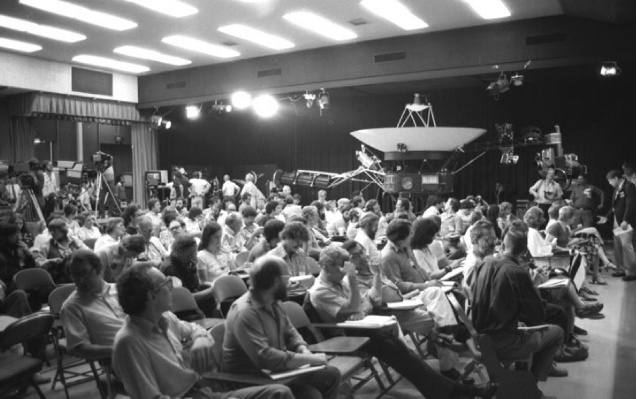 |
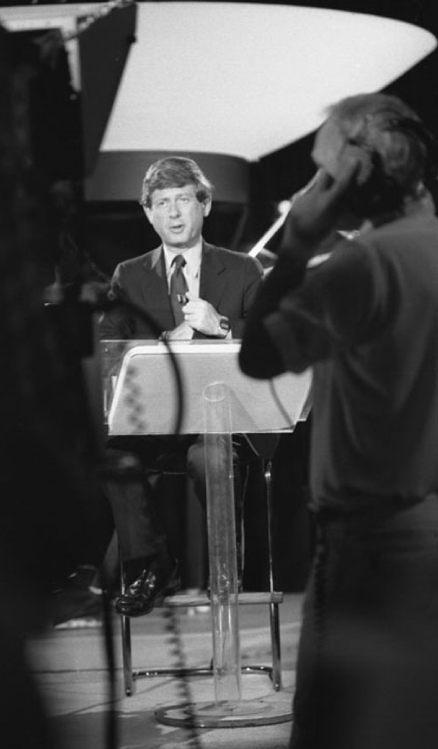 |
|||||||
The Voyager press briefing at the Jet Propulsion Laboratory's Von Karman Auditorium. This photo was taken on the day of closest approach to Saturn by Voyager 2 on August 25, 1981. |
||||||||
On the evening of closest approach, the ABC News Nightline program originated live from the Von Karman Auditorium. Ted Koppel interviewed guests, scientist Carl Sagan and politician William Proxmire. Mr. Proxmire made the comment that we didn't need to send these probes into space now because the planets would always be there. Dr. Sagan responded that, yes it was true, but that humans might not be around to explore them. |
||||||||
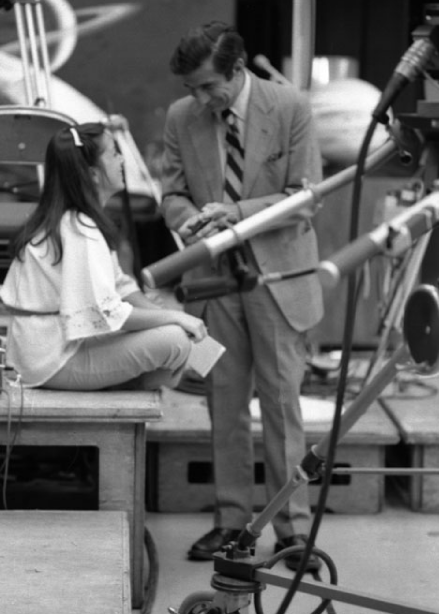 |
|||||||||||
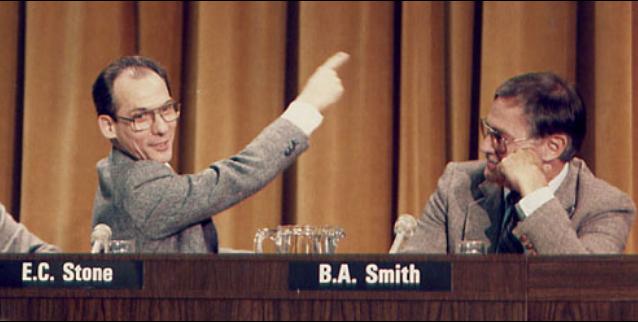 |
|||||||||||
Dr. Ed Stone was head of the Voyager program. He is seen here at a press briefing with Brad Smith. Stone was later given the Director's spot at the Jet Propulsion Laboratory. |
|||||||||||
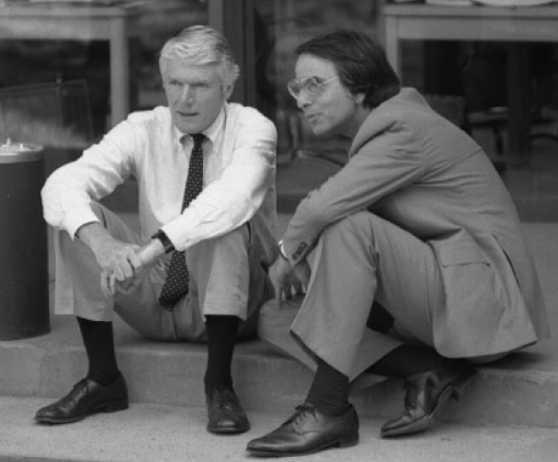 |
|||||||||||
ABC News science corespondent Jules Bergman |
|||||||||||
Dr. Carl Sagan discussing the latest findings with a fellow planetary scientist on the steps of the Von Karman auditorium. |
|||||||||||
— Uranus — |
||
January 28, 1986 This morning at 10:00 PST was supposed to be the final press briefing for the Voyager 2/Uranus encounter. Due to this fact, most of the science and space corespondents from the major news organizations were all at the Jet Propulsion Laboratory in Pasadena, California. On the opposite coast, the Space Shuttle Challenger was slated for liftoff that morning with the first Teacher in Space. No national network carried the launch live. At JPL, there was a giant screen in the Von Karman Auditorium used for the latest images from Voyager during press briefings. Since the launch occurred about 90 minutes prior to the start of the briefing, the crew at Von Karman brought up the live launch feed from the Kennedy Space Center. Only a few of us were there that early, but those of us that were thought it was great to be able to see a shuttle launch on a large video screen. At 73 seconds into the mission, disaster struck in front of our eyes. It was quickly apparent that the shuttle was lost. Everything quickly shifted from covering the Voyager encounter to the loss of Challenger. Just the day before, many of us had been discussing our applications to NASA for the Journalist in Space project. It was an exciting time. All that changed at 08:38 PST on January 28. The Uranus press briefing was canceled for the day and rescheduled for several days later. Even discussing the wonderful findings of Voyager at that point was a somber occasion. Click the link below for a full diary of the encounter period and the reactions to the Challenger accident. |
||||
 |
||||
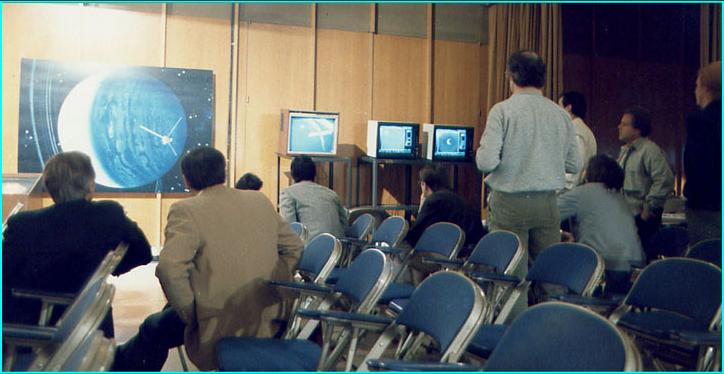 |
||||
Soon after the disaster, the large video screen was turned off. This photo shows some of the press personnel gathered in front of the small monitors to watch events unfold. |
||||
— Neptune — |
||
In August 1989, the party was much more lively. As a send off there was a large Voyager Wrap Party held at JPL. It was even carried live on Turner Broadcasting. Carl Sagan was the MC for the festivities, that included the musical accompaniment of Chuck Berry, whose Johnny B. Goode was on the way to the stars aboard the Voyager spacecraft. |
|||||
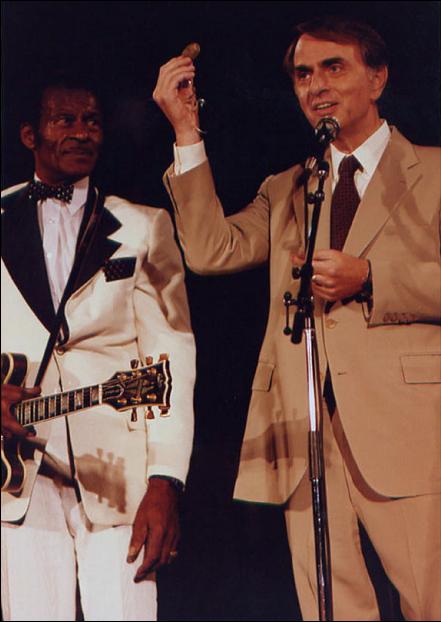 |
|||||
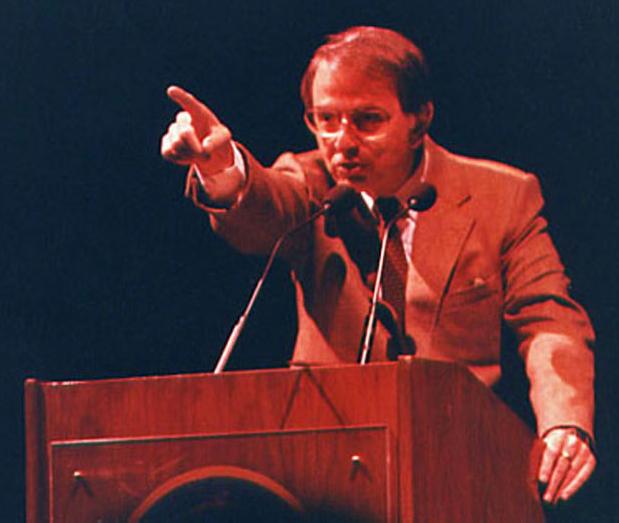 |
|||||
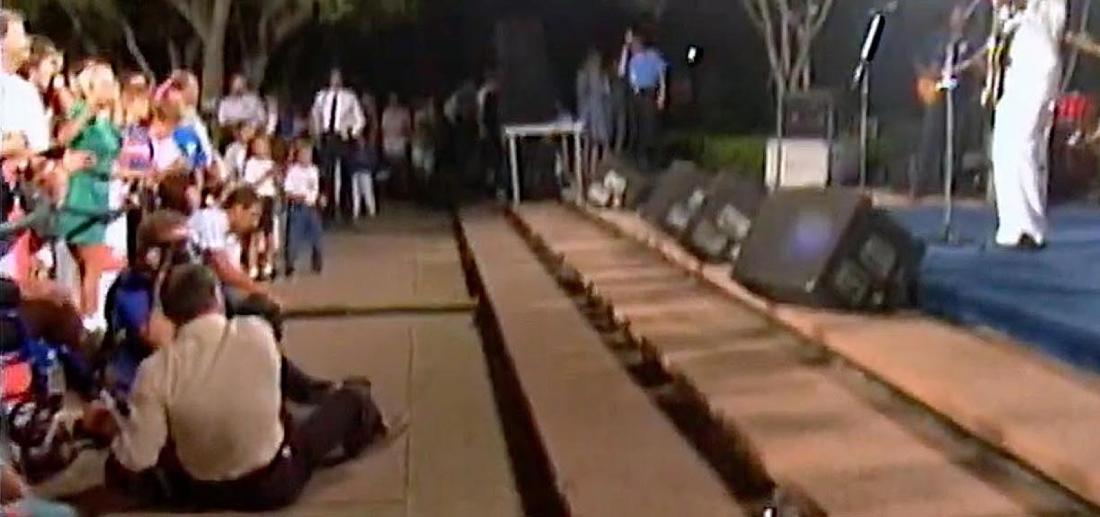 |
||
The above image is from a television special that aired on TV of the Voyager Wrap Party. I am in the very front of the crowd at left, in a light-colored shirt. I'm just above the journalist in the foreground wearing the brown shirt, and in front of the girl in the green dress, who is standing directly behind me. The stage area is at the right, covered in blue carpet. |
||